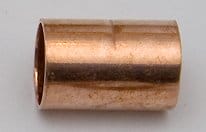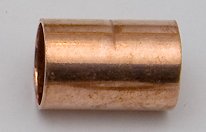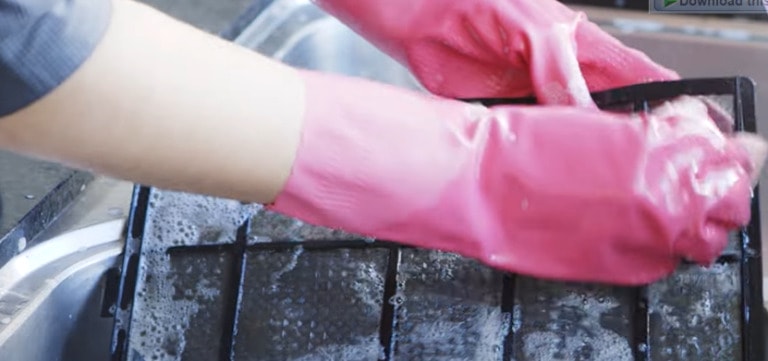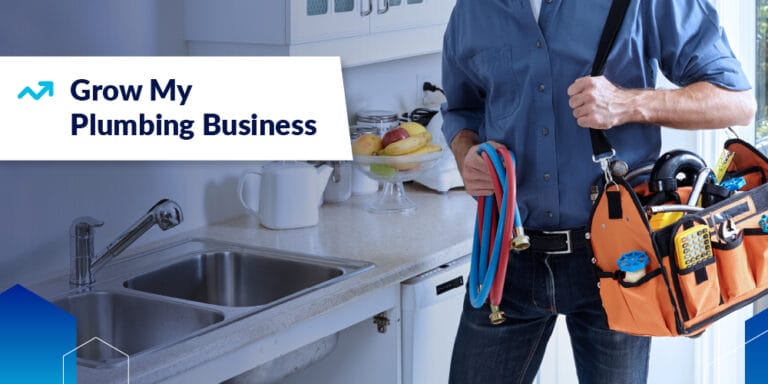
What role does a plumbing coupling play in your home’s pipes and drains? If you’re curious about this essential component of plumbing systems, you’ve come to the right place.
In this article, we’ll explore the ins and outs of plumbing couplings, explaining what they are and how they’re used. So let’s dive in and get to know couplings in plumbing!
Picture this: you’re remodeling your bathroom, and you need to connect two pipes together. That’s where a plumbing coupling comes into play.
Simply put, a coupling is a fitting that connects two pipes or sections of pipes, allowing for a secure and watertight joint. It’s like the superhero of plumbing connections, ensuring that water flows smoothly without any leaks.
Whether you’re a DIY enthusiast or just want to learn more about plumbing, understanding couplings is crucial. They come in various sizes and types, such as compression couplings, soldered couplings, and push-fit couplings. Each type has its own advantages and uses, so stay tuned to discover the fascinating world of plumbing couplings in our next sections!

What is a Coupling in Plumbing? Explained in Detail
Plumbing is an essential part of any building, whether residential or commercial. It ensures the proper flow of water and the functioning of various appliances. One of the key components in plumbing systems is coupling.
A coupling is a small but crucial fitting that connects two pipes together. It provides a secure and leak-free connection, allowing the smooth flow of water or other fluids through the plumbing system. In this article, we will delve into the world of plumbing couplings, exploring their types, uses, installation, and more.
Purpose of Couplings in Plumbing
Couplings play a vital role in plumbing systems by allowing the connection of pipes with different diameters, materials, or purposes. They ensure a secure and watertight joint, preventing leaks and maintaining the integrity of the plumbing system.
Couplings come in various forms, such as compression, threaded, mechanical, or push-fit, each suitable for specific applications. Whether you are repairing a broken pipe or extending the plumbing system, couplings provide the means to connect and join pipes reliably.
Benefits of Couplings in Plumbing
1. Versatility: Couplings come in various sizes and types, allowing you to connect pipes of different diameters and materials. This versatility enables flexibility in plumbing installations and repairs.
2. Easy Installation: Couplings are designed to be user-friendly, allowing for quick and hassle-free installation. They eliminate the need for complex soldering or welding techniques, saving time and effort.
3. Leak-Free Connections: Couplings create tight and secure connections between pipes, minimizing the risk of leaks or water damage. This ensures the smooth and efficient functioning of the plumbing system.
Different Types of Couplings in Plumbing
There are several types of couplings used in plumbing, each serving a specific purpose. Here are some commonly used couplings:
Compression Couplings
Compression couplings consist of two parts: a compression nut and a ferrule. They are suitable for connecting pipes made of soft materials such as copper, plastic, or polyethylene. The compression nut compresses the ferrule against the pipe, creating a tight seal.
Threaded Couplings
Threaded couplings feature threaded ends that screw onto the pipes, creating a secure connection. They are commonly used in applications where pipes need to be joined temporarily or where disassembly is required.
Mechanical Couplings
Mechanical couplings employ a mechanical mechanism that clamps onto the pipes, creating a strong and secure joint. They are often used in underground or buried pipes, where a watertight seal is crucial.
Installation and Maintenance of Couplings
Installing a coupling in a plumbing system is a relatively simple process. Start by ensuring that the pipes to be connected are clean and free from debris.
Next, choose the appropriate type of coupling for the specific connection. Follow the manufacturer’s instructions to assemble and tighten the coupling securely. It is crucial to ensure a tight fit to prevent leaks.
Regular maintenance of couplings is essential to ensure their continued effectiveness. Inspect the couplings for any signs of wear or damage and replace them if necessary.
Additionally, check for leaks or abnormalities in the plumbing system, as these could indicate an issue with the couplings. By proactively maintaining your couplings, you can prevent potential leaks and water damage.
Tips for Working with Couplings in Plumbing
1. Choose the Right Coupling: Selecting the correct type and size of coupling for your plumbing application is crucial. Consider the pipe materials, diameters, and intended use when choosing a coupling.
2. Ensure Proper Cleaning: Before installing a coupling, ensure that the pipes are clean and free from debris. Any contaminants can compromise the effectiveness of the coupling and lead to leaks.
3. Use Adequate Sealants: Depending on the type of coupling, using sealants such as Teflon tape or pipe dope can help create a watertight seal. Follow the manufacturer’s recommendations for the specific coupling and application.
4. Tighten Properly: Ensure that the coupling is tightened securely but avoid over-tightening, as this can damage the pipes or the coupling itself. Follow the manufacturer’s guidelines for the appropriate torque specifications.
5. Regularly Inspect and Maintain: Periodically inspect the couplings in your plumbing system for any signs of wear or damage. Promptly replace any faulty couplings to prevent leaks and water damage.
Couplings are a vital component of plumbing systems, allowing for the secure connection of pipes and ensuring the smooth flow of water or other fluids.
Understanding the different types of couplings, their uses, and proper installation techniques is crucial for maintaining a reliable and leak-free plumbing system.
By following the tips provided and regularly maintaining your couplings, you can ensure the long-term efficiency and functionality of your plumbing system.
Frequently Asked Questions
Looking to learn more about couplings in plumbing? We’ve got you covered! Read on for answers to common questions about this essential plumbing component.
1. What is the purpose of a coupling in plumbing?
A coupling is a small but essential part of a plumbing system. Its main purpose is to connect two pipes together securely, allowing for the continuous flow of water or other fluids.
Couplings are often used when pipes need to be extended, repaired, or rearranged, as they provide a reliable connection point that can be easily disassembled if needed. In short, couplings ensure that the plumbing system functions smoothly and efficiently.
While couplings are typically used to connect pipes of the same material, there are also versatile couplings available that can join different types of pipes together. This flexibility allows for greater versatility in plumbing installations and repairs.
2. What types of couplings are commonly used in plumbing?
There are several types of couplings used in plumbing, depending on the specific application and pipe materials being joined. Some common types include:
– Slip Couplings: These couplings are used to connect two pipes of the same size together without the need for additional tools or adhesive. They have a smooth interior that allows the pipes to easily slide in and out, creating a secure connection.
– Compression Couplings: Compression couplings use a nut and sleeve system to create a tight seal between pipes. They are often used to repair or extend existing pipes and are available in various materials such as brass, copper, and PVC.
– Push-Fit Couplings: As the name suggests, push-fit couplings allow pipes to be connected by simply pushing them together. These couplings are convenient and are commonly used in DIY plumbing projects.
– Flexible Couplings: Designed to accommodate slight misalignments, flexible couplings are used when connecting pipes of different diameters or materials. They are made of rubber or plastic and have clamps on each end to secure the pipes in place.
3. How do I choose the right coupling for my plumbing project?
When selecting a coupling for your plumbing project, there are a few factors to consider:
– Pipe Material: Ensure that the coupling is compatible with the materials of the pipes you are connecting. Different materials may require specific couplings to create a reliable and durable connection.
– Pipe Size: Couplings come in different sizes to accommodate various pipe diameters. Measure the pipes accurately to select the appropriate coupling size that will create a secure fit.
– Application: Consider the purpose of the coupling. Are you connecting pipes for a temporary repair, or is it a permanent installation? Some couplings are designed for specific applications, such as repairs, extensions, or transitions between different materials.
By considering these factors, consulting with a plumbing professional if needed, and ensuring you have the right tools for installation, you can choose the right coupling for your plumbing project successfully.
4. How do I install a coupling in a plumbing system?
Installing a coupling in a plumbing system typically involves the following steps:
1. Cut the pipes: Use a pipe cutter to cut the pipes where you plan to install the coupling. Ensure the cuts are clean and straight for a proper fit.
2. Prepare the pipes: Remove any burrs or rough edges from the cut pipes using a deburring tool. This ensures a smooth surface for the coupling to seal against.
3. Fit the coupling: Slide the coupling onto one end of the pipe, ensuring it is aligned correctly and fully inserted. Repeat the same process for the other pipe end.
4. Secure the coupling: Depending on the type of coupling, follow the manufacturer’s instructions to secure it properly. This may involve tightening compression nuts, applying adhesive, or fastening clamps.
5. Test for leaks: Turn on the water supply and check for any leaks around the coupling. If leaks are detected, tighten the coupling further or make adjustments as necessary.
Remember, if you’re unsure about the installation process, it’s always best to consult a professional plumber for guidance.
5. Can couplings be reused, or should they be replaced?
Generally, it is recommended to replace couplings when disconnecting pipes. This is because the sealing capability and overall integrity of the coupling may diminish over time due to wear and tear.
Reusing couplings, especially if they have been in use for an extended period or have been subject to significant pressure, may increase the risk of leaks.
Additionally, certain types of couplings, such as compression couplings, may require readjustment or retightening when reused, further complicating the process.
However, if a coupling is relatively new, undamaged, and installed properly, it may be possible to reuse it in certain cases. It is important to carefully inspect the coupling for signs of wear, damage, or degradation before deciding whether or not it can be reused.
When in doubt, it is always best to err on the side of caution and replace the coupling to ensure the integrity and reliability of the plumbing system.
A coupling is an important component in plumbing that connects two pipes together. It’s like a mechanical connector that allows water or other fluids to flow smoothly between pipes.
Couplings come in different sizes and types, such as compression couplings or push-fit couplings. They are made from various materials like PVC or brass, depending on the specific plumbing application.
When installing a coupling, it’s important to make sure the pipes are clean and free from debris. Properly tightening the coupling ensures a strong and leak-free connection.
Overall, couplings play a vital role in plumbing systems, allowing for efficient and reliable pipe connections.






